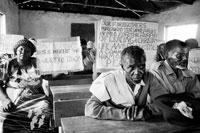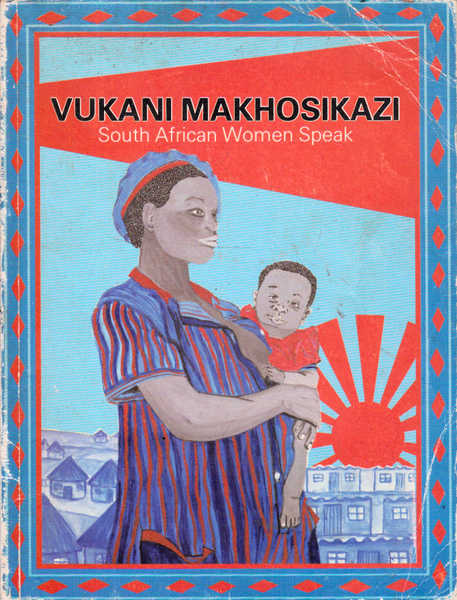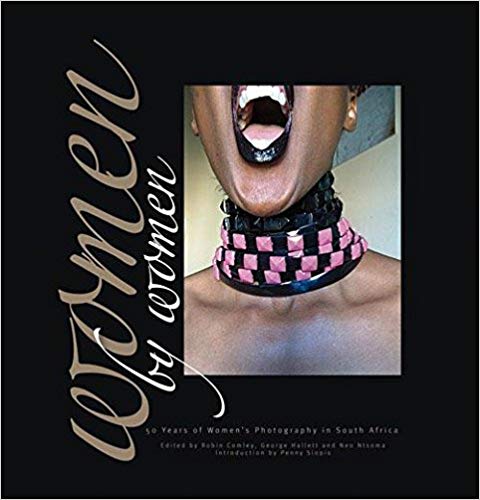Gille de Vlieg was born Gillian Ruth Hemson in Plymouth, England in 1940 during a Nazi bombing raid on the city. After losing their home in a later bombing raid, she and her mother relocated to Durban, South Africa in February 1944. Her father had been sent by the Admiralty (Royal Navy) to work on radar installations at the Simon's Town Naval Base and later on Salisbury Island, Durban.[4]

In 1958, de Vlieg was trained as a nurse at Greys Hospital in Pietermaritzburg. After finishing her diploma, she worked in London and met her first husband, Iain Paton Millar, a journalist. After a short period in Katanga Province of the DRC she moved to Johannesburg in 1963, where her daughters Ruth and Katherine were born. Katherine died when nine months old and her marriage to Iain disintegrated just prior to the birth of her son, Andrew. She lived for a time in Botha's Hill and Durban where she met and married Rob de Vlieg, a sail maker. They moved back to Johannesburg to set up his business in 1975.
It was not until 1982 that she joined the Johannesburg Black Sash as a volunteer and she was soon put onto their regional committee and became a vice-chairperson. It was during the height of student riots in Tembisa in 1984 that Gille de Vlieg first made contact with Greg Thulare, an organiser for COSAS in Tembisa. She was slowly introduced to the politics of the UDF and ANC during this time. One of her responsibilities at Black Sash was to work with rural communities which were threatened with removal to the homelands, and she soon became interested in taking photos. When Paul Weinberg asked her to join Afrapix, she replied, "Okay, I will come to work for Afrapix, but I'm not working as a secretary, I want to be a photographer." She had a camera and a couple of lenses but knew very little about photography. Paul Weinberg taught her how to process the film and Cedric Nunn taught her how to print. She quickly realised she could use photography as a means of protest. In her own words, “I wanted to make a contribution to an alternative view of South Africa, a view not seen on the South African TV screen then.”
The next several years she spent documenting various townships and rural areas mostly in the former Transvaal. As it was then illegal for a white woman to enter the black townships, she lied to get a permit from the Tembisa Council and eventually was allowed into Tembisa under the guise of taking pictures for Anglo American.[5] While working in Tembisa, she met other members of COSAS including Debra Marakalala, Sipho (Sandile) Qwabe, Tshepo Mphuti and Reuben Mahlagare. Trust developed between them and de Vlieg. Her house in the safe northern suburbs of Johannesburg was often used as a hideout when the police were looking for COSAS activists. In June 1986, de Vlieg was arrested after a raid on her house, initially under Section 50 of the Internal Security Act, and taken to John Vorster Square and then to the Hillbrow police station for thirty-seven days. On her release she continued covering forced removals, protests, police violence and conscientious objectors amongst others.
In 1987 she participated in the Culture in Another South Africa Conference that took place in Amsterdam. She joined the group exhibition “Taking Sides” in 1989, and took part in other Staffrider exhibitions. In 2014 she was nominated as a finalist of the Mbokodo Awards. The Gille de Vlieg Photographic Collection is held by the South African History Archive.
De Vlieg now lives on the kwaZuluNatal North Coast.
Collective exhibitions
- 2012 – Rise and Fall of Apartheid: Photography and the Bureaucracy of Everyday Life – International Centre of Photography, New York City, NY
- 2012 – NUMSA
- 2011 – Photography 1950 – 2010 – Pretoria Art Museum, Pretoria
- 2009 – End Conscription Campaign (ECC)
- 2002 – Shooting Resistance: South African Photography 1976 – 1994 – Axis Gallery Inc., New York City, NY
- 1990 – Malibongwe – Netherlands
- 1989 – Radda Barnen – Sweden
- 1987 – Taking Sides in South America – TPW – Toronto Photographers Workshop, Toronto, ON
- 1985 – People's Portraits – South African National Gallery
Individual shows
- 2012 – 'Hidden from View: Community Carers and HIV in Rural South Africa' held at the University of KwaZulu-Natal, produced in co-operation with Amnesty International
- 2009 – 'Rising Up Together' at Durban Art Gallery premiering at the National Arts Festival in Grahamstown
- 2006 – 'Rising Up' at Constitution Hill, Johannesburg, opened by former Constitutional Court judge, Kate O'Regan
Work featured in the following publications:
- Vukhani Makhozikazi (1985)
- Beyond the Barricades (1989)
- Women by Women: '50 Years of Women's Photography in South Africa' (2006)


Gille De Vlieg [online] Available at: gille.co.za [Accessed 20 April 2009]|Interview conducted by SAHO CEO Omar Badsha